San Luis de Sabinillas is a small fishing village on the Costa del Sol in Manilva municipality, Malaga province, Andalucia, Spain
By Nick Nutter | Updated 29 Aug 2022 | Málaga | Villages |
Login to add to YOUR Favourites or Read Later
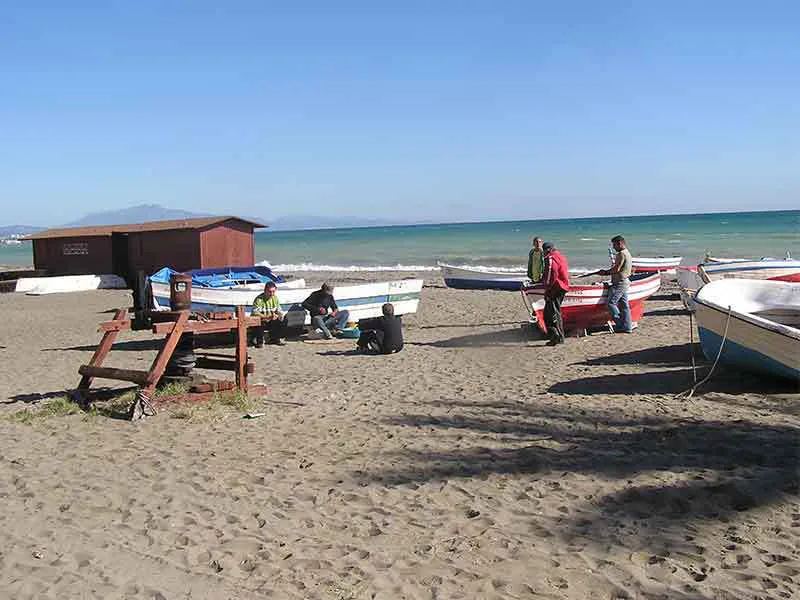
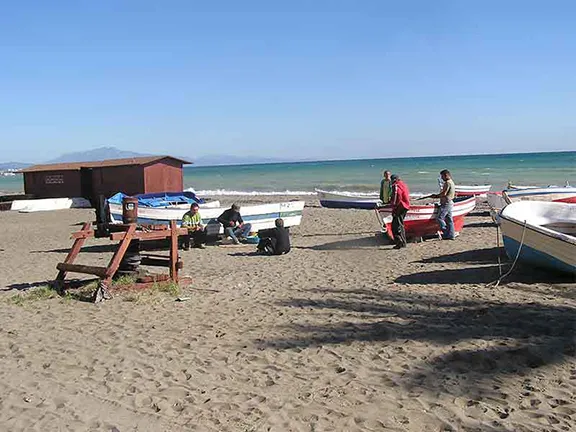
The Fisherman San Luis de Sabinillas
It is easy to forget how much San Luis de Sabinillas has changed over the last twenty years. No doubt some readers will remember even further back.
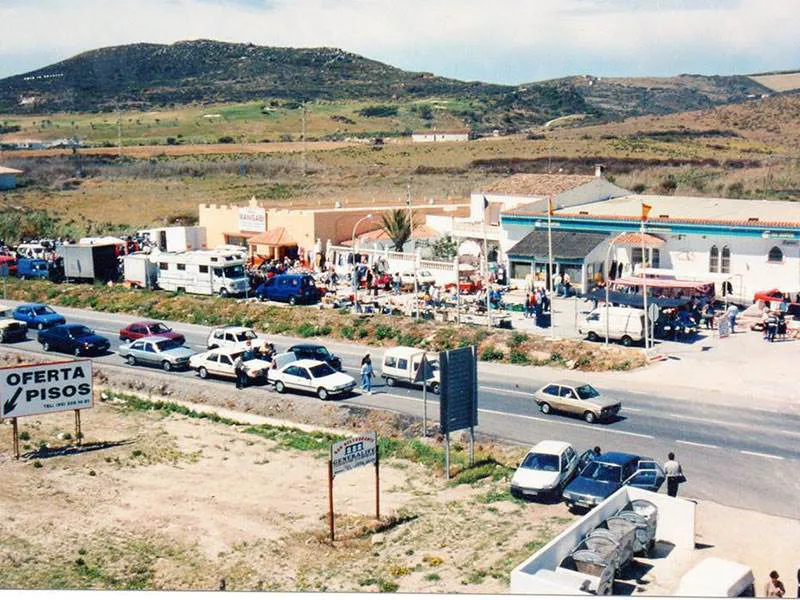
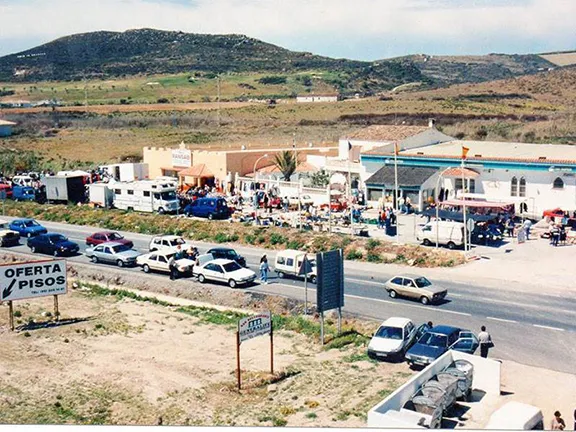
El Rastro outside MiSuper ©Dean Tyler Shelton
Even in the year 2000, ‘Sabi’ was nothing like it is today. The N340, as it was then, was a single-track road with dusty, sandy verges. Entering the village from the north, a lane, even narrower and dustier, ran off to the right, through smallholdings, inland to the Roman Oasis Restaurant, and on the corner was a fine institution, The Gran Bar, open 24 hours a favourite for brandy and coffee at some unearthly hours with the weather beaten old Spanish gentlemen and lorry drivers.
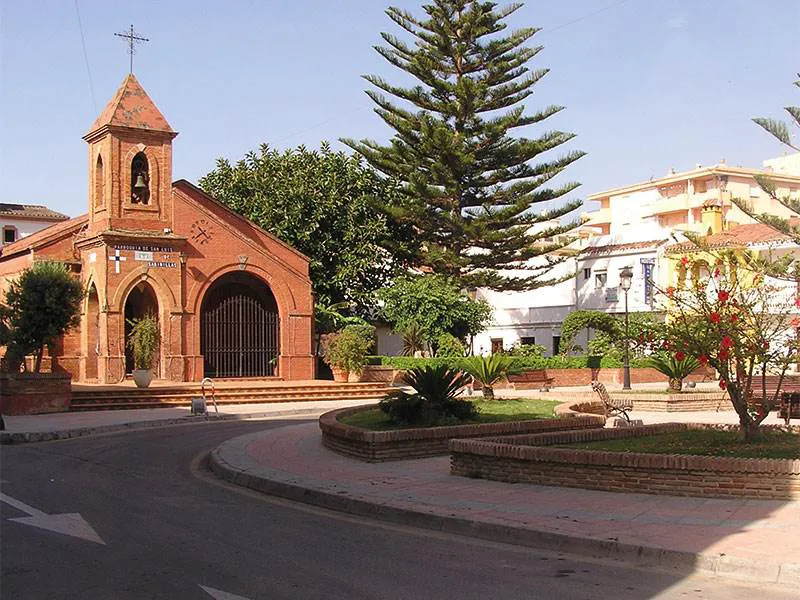
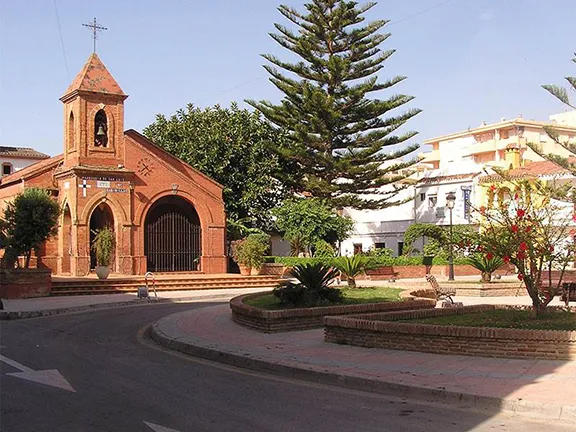
The church
On the left-hand side of the N340 was the abandoned Hotel El Mero with a gigantic fig tree almost obliterating the façade which was, from the road, a convex edifice, four stories high. The hotel was situated just before the street that now leads off left down to the paseo. On the corner was the first ‘big chain’ supermarket in town, Super Sol, and behind that, the Correos: a tiny, narrow locale, with room for three customers and queues running back to the main road at busy times. The Correos was soon to be overrun by the influx of new residents. Post office boxes were like gold, passed on in families. Beyond Super Sol were a few houses, El Cambrai estate agents, the square on the right, with the church a little further down and then, running right to left, Calle Los Arcos. A Spanish restaurant, possibly the oldest in Sabinillas, that is now an English bar called Arcos 38, and one or two high rise urbanisations was to the left while a Hotel, Don Luisa, was the main building to the right. A little further was another scattering of houses, a school, and then the old sugar cane factory, now La Colonia.
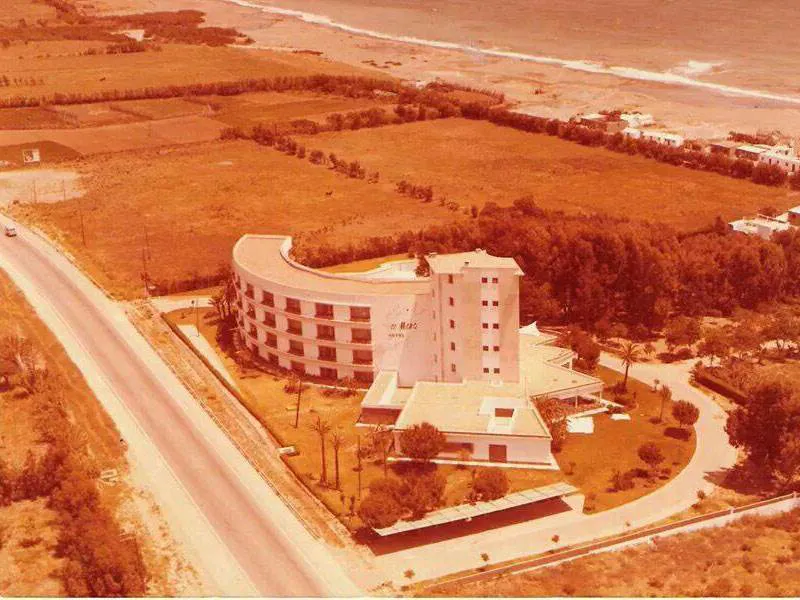
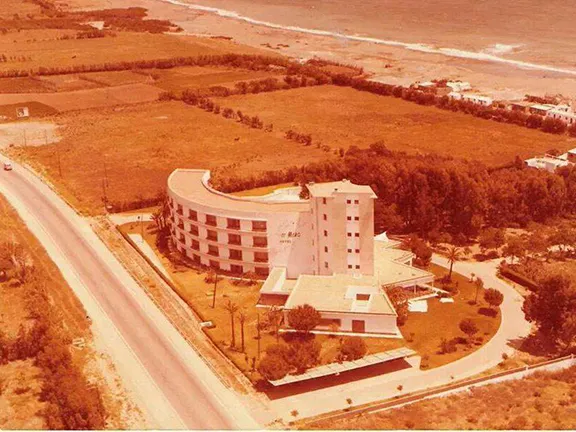
El Mero Hotel ©Dean Tyler Shelton
Where the paseo is today, there was sand with a few fishermen’s cottages built directly on the beach. Many of the flat roofs had strung twine between posts on which local fish dried. The dried fish could be bought at the weekly food market, each purveyor eager to allow you to taste his wares before buying. The winches used to haul the fishing boats from the water were of a design unchanged for five thousand years. During the summer there were two, ramshackle, chiringuitos, one at each end of the beach and just a couple of fish restaurants. If you were lucky, or there just at the right time, the family fishing boat would land on the beach, fish would be unloaded in buckets and the menu would be chalked up depending on what had been caught.
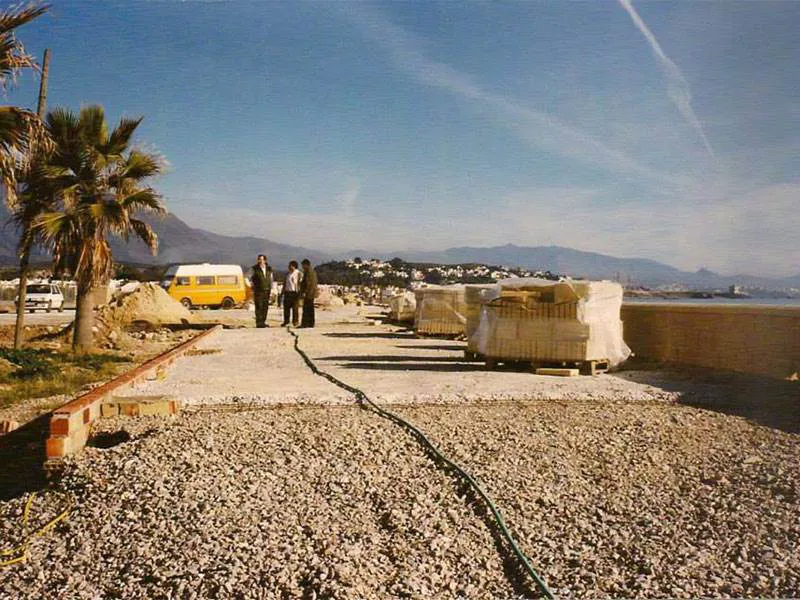
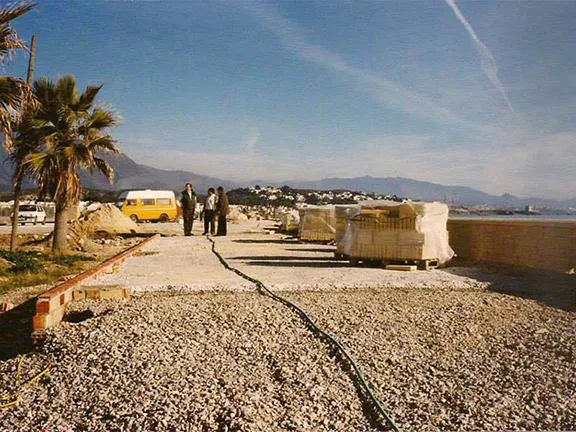
Sabinillas paseo ©Dean Tyler Shelton
The wasteland just inland from the southernmost chiringuito was, on Sundays, a sprawling car boot sale, known as a rastro, the highlight of the week for Spanish and expat residents and visitors alike.
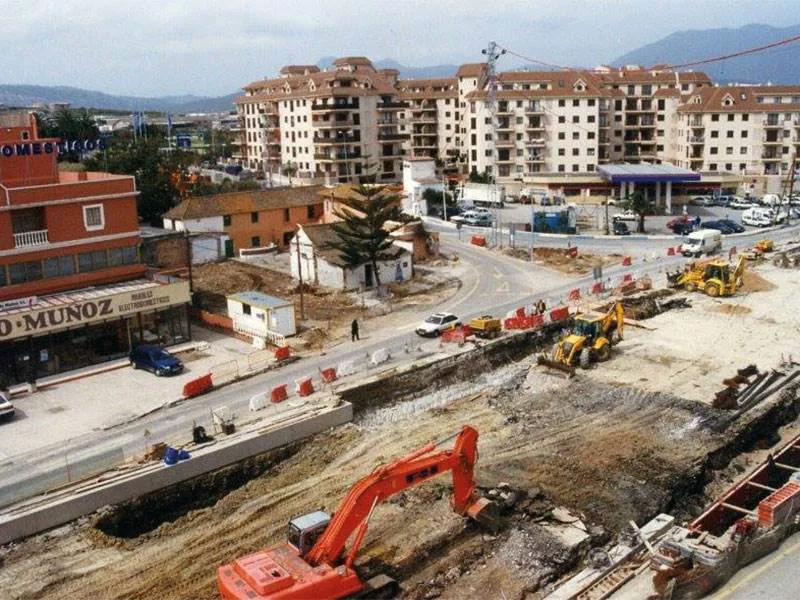
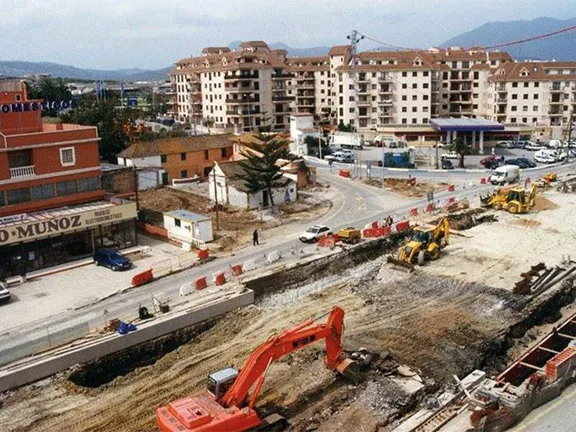
Building the Underpass ©Gary Beaumont
Back to the main road and opposite was the inland road to Manilva that climbed the ridge through grape vines to reach the village. In September the wine manufactured in many homes in Manilva would find its way in plastic bottles, onto the shelves of the family-owned stores in Sabinillas. In this instance, Super Sol never got a look in. On the corner was a bodega where anything was available if you had a few pesetas, beer, local wine, cigarettes, lottery tickets, cannabis. It was one of the daily meeting places for the older men of the village who made their coffee and chupeta last all morning.
Heading towards Gibraltar, there was a ferreteria, a tyre replacement business and a grocer’s store in what resembled a barn. This shop was fascinating; heaps of vegetables directly on the floor that you picked over and loaded onto the counter where it was weighed and bagged by a large Spanish lady who also guarded the till. Her husband moved around replenishing stock as required and, on request, taking huge bunches of coriander, mint or parsley from the ancient refrigerator at the rear of the store. The English bookshop was there then, although only half the size, and a Chinese restaurant on the corner of what was the only road to two urbanisations inland. MiSuper, a family run supermarket that adjoined a centre for all the christening and communion parties, and then further south the isolated, walled and barred, Guardia Civil station, were the last buildings leaving town.
The population of Sabinillas was less than 2,000 in the year 2000. Today it is over 7,000. It was a very relaxed place, mañana was a favourite word whether issuing from the mouth of the plumber or the bank manager.
As Sabinillas grew, so to did the atmosphere in the town. Newcomers could be forgiven for thinking they were in some wild west town in America at the turn of the century, the 19th century that is. Drug running was not unusual and some of the local young bucks carried knives and, in a few cases, firearms. Kipling could have been thinking of Sabinillas when he wrote ‘A Smugglers Song’ - ‘Watch the wall my darling whilst the Gentlemen go by’. Motorcycles and old bangers often raced through the town with little regard for pedestrians or other motorists. Having said that there was not much local crime, or not much reported. The crime that was heard of was mostly opportunistic, the odd bag snatch, the occasional burglary and most of that was put down, unjustly in many cases, to illegal immigrants who fetched up on the shores of Manilva municipality having been transported across from Morocco in inflatable boats.
In the early years of the new century, the main road was widened and verged, and an underpass appeared, almost overnight it seemed. The bodega on the corner of the Manilva road became a casualty of progress but the filling station opposite benefitted from the easier access.
Urbanisations were built until Sabinillas joined up with its neighbour, Puerto de la Duquesa, and a new paseo was built joining the two. The Paseo in Sabinillas rapidly filled with new businesses, cafes, restaurants and bars. In the town, banks, supermarkets and solicitors joined the ever-growing number of service businesses needed by every large town. The Correos moved into a brand-new building behind Mercadona and soon had to introduce a ticket system to deal with the hoards. Sadly Paul Hickling, owner of the Roman Oasis restaurant, closed its doors for the last time in August 2018, the end of an era.
The population grew and, as it did, the Guardia and local Police increased their efforts. There is no more crime in Sabinillas now than in other places, probably less because it still retains its Spanish family ethos and is not yet that large that all residents are strangers. The fishermen, old and young, continue to gather at the southern end of the paseo to decide whether or not to launch their boats and the beach winches still haul the craft from the water. You may spot the random winch now operated by a motor rather than the capstan bars used in bygone days.
Inland the modern urbanisations are interspersed with green parks and ponds, a far cry from the traditional build, small, dark, cramped housing, that formed the bulk of the residential property twenty years ago. Most of the fishermen’s cottages have been replaced. Of those that remain, some still dry fish on the roof but these days it is for themselves, family and friends.
So much has changed, some things for the better, some not. If you know where to look and who to ask, you can still find local dried fish and local wine and fresh vegetables taken from the smallholdings that morning. The local people, residents and expats, are as friendly as ever and mañana still rules.